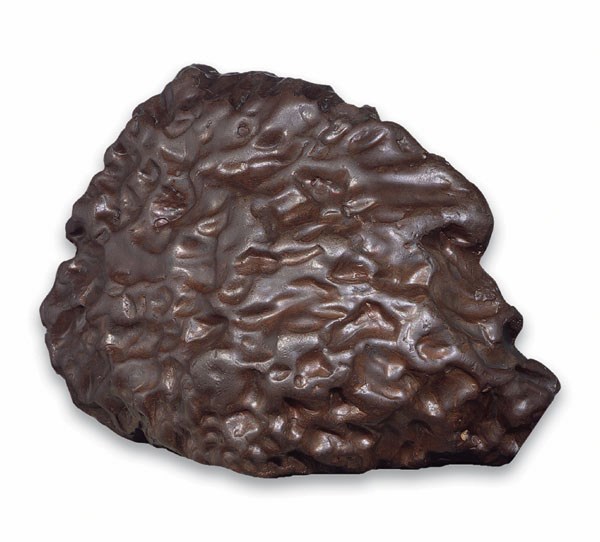The president of Blue Quills First Nations College recently made national headlines in his attempt to bring the Manitou stone, a meteorite with great spiritual importance, to a new housing unit at Blue Quills.
“(The stone) means strength. It is a representation of being strong with who we are, and to continue to be who we are,“ Vincent Steinhauer said of the stone, the shape of which is said to resemble the face of the creator. When the stone was taken from the First Nations people, “it brought war, disease, famine and ultimately the death of our people.,” according to Steinhauer. “It’s incredible we’re still around.”
Steinhauer has started a petition to support his mission to bring the stone to Blue Quills from its current home at the Royal Alberta Museum, and hopes to have it signed by a million people. His mission has since drawn coverage from media outlets, including the CBC and the National Post.
Chris Robinson, executive director for the Royal Alberta Museum (RAM), says that a request to move the stone to Blue Quills has never been formally placed. Steinhauer was unavailable for comment regarding the absence of a formal request.
“This notion of the college wanting it back - there has not been a request, it is all hypothetical at this point,” Robinson said, adding that the museum has spent a considerable amount of time trying to determine the best location to house the stone.
The meteorite, which originally touched down near Hardisty centuries ago, was taken from the First Nations people in 1866, and was eventually moved to Victoria University in Ontario in the 1880s.
In 1972, the stone traveled back to the RAM. The museum was given conditions for its housing, which include that it cannot be used for profit, and that all studies into the rock must be non-invasive.
In 2001, Blue Quills approached Victoria University in Ontario, which held title to the stone at the time, and asked to have it transferred over to the college. Robinson says that at the point the agreement was reached, the museum began talks with the First Nations people regarding an appropriate location for the stone, and the title was transferred over to the Province of Alberta.
“What they need to do is just transfer the title over to us, either as a First Nation, the college because the college itself is a First Nation, or collectively to the Nations,” Steinhauer said.
“We predate Alberta and it was held in collective by the Blackfoot, by the Cree, by the Dene, by the Nakoda, by the Anishinabe, all the Nations that occupied this area prior to the coming of our visitors. It’s time to respect one another.”
The stone is currently housed in the Syncrude Gallery of Aboriginal Culture at the RAM, and there is no charge for any First Nations people wishing to pay tribute to the stone, but Steinhauer feels that is not enough.
“You can’t do a ceremony with it (there), you have to book in advance if you want to do a ceremony. It’s in the middle of Edmonton and ceremony just doesn’t happen in the middle of the city, it has to happen out on the land, and people just don’t understand that.”
Robinson says that a permanent location for the stone has yet to be conclusively determined precisely because of the fact that it should belong collectively to the First Nations.
“The whole notion of it being transferred was to find the most appropriate solution for housing the stone. We never went into this thinking it would always be on display in the RAM,” Robinson said.
“We consulted with 40 First Nations representatives in Alberta and Saskatchewan on the very simple question, where should the stone be housed? There was no unanimous decision on what should happen to the stone. What was very clear to us was that they felt strongly that the stone belonged to all First Nations.”
Robinson went on to add that the notion of having the stone moved to Blue Quills was not readily accepted by many of the First Nations representatives.
“There was very little support in returning it specifically to Blue Quills, believing that the stone belongs to all First Nations. There was a slight majority of the 40 that thought the best solution for the stone in the long run would be to house it near Hardisty.” This would reflect where the stone originally landed.
Robinson said that the museum intends to relocate within the next few years, and that if the stone is still to be housed within the museum at that point, an area will be constructed specifically for ceremonial use of the stone. The new housing location will allow First Nations people to pay tribute to the stone without even having to pass by the front desk of the museum, he notes.



